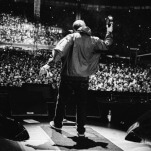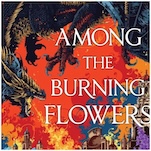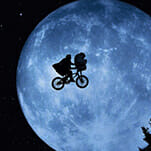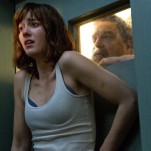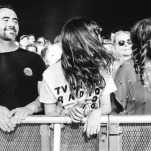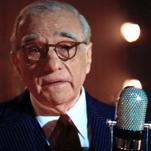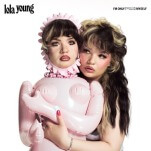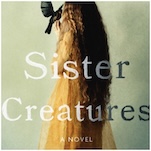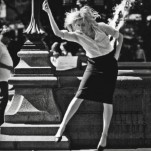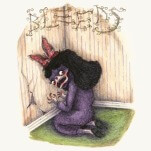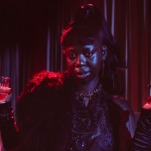Alexandra Kleeman Deconstructs the Horrors of Self Image in You Too Can Have A Body Like Mine
Photo by Arturo OlmosAlexandra Kleeman has written the scariest and funniest book about body image. It’s also about consumer culture and our obsessions with “reality” television. You Too Can Have A Body Like Mine is about so many strange and often disturbing things, but it’s actually about how you feel. Yes, you, inside of your body and inside of your own perception. We know that sounds heavy, but once Kleeman draws the curtain and you view the eerily familiar world she’s created, you’re going to want to browse around for a bit.
 You could call it horror, but that’s because there’s a cult that worships the purification of diet plans. You could call it dystopic, but that’s only because there’s a spat of strange disappearances and ethically-bankrupt reality shows ruling the psyches of the land. And you could call it suspense, but that’s only because our main character, a young woman known simply as A who works as a copy editor and leads an otherwise unremarkable life, is growing ever more paranoid that her seemingly disturbed roommate, B, is slowly morphing into her twin. You could call it romance, but A can’t mine much sentimentality or even a thoughtful bit of advice from her boyfriend, an aloof gent known as C, as he shrugs off her panic over B’s mimicry.
You could call it horror, but that’s because there’s a cult that worships the purification of diet plans. You could call it dystopic, but that’s only because there’s a spat of strange disappearances and ethically-bankrupt reality shows ruling the psyches of the land. And you could call it suspense, but that’s only because our main character, a young woman known simply as A who works as a copy editor and leads an otherwise unremarkable life, is growing ever more paranoid that her seemingly disturbed roommate, B, is slowly morphing into her twin. You could call it romance, but A can’t mine much sentimentality or even a thoughtful bit of advice from her boyfriend, an aloof gent known as C, as he shrugs off her panic over B’s mimicry.
Oh, and maybe there’s a romance of unrequited love, because A certainly starts coveting an extraordinary, highly modified, lab-wrought, shrink-wrapped dessert known as “Kandy Kakes.” Does she have to join the cult, though, just to get a taste?
Here’s the scary part: you’ll feel like you’ve been in this world before. You’ll feel as though these unconscious thoughts—about food, about your face, about your inner-workings—have raced through your nervous brain before. People have started talking about “21st Century Literature,” something more agile, more strange, adapted to a post-social-media existence and ever-more cerebral when it comes to existential quandaries. We think Kleeman’s debut presents a prime example.
![]()
Paste: Parts of this book reminded me of John Carpenter’s They Live in terms of a narrative that implored me to drop scales from my own eyes, in a way. What did you want to instill in your readers with this story? ?
Kleeman: I definitely wanted to make people really feel their modern contemporary world differently, to feel it as a deformative pressure. Deformation is not necessarily bad. You love someone…and they deform you. They talk to you in a certain way and ask you certain questions and respond to your questions differently and they become different. But, to actually notice the changes that are happening within the world that you live in, daily, and believing in the fixity of the person you see every day in the mirror who is pretty much the same, day after day… You know, now that you mention They Live, I’ve never seen it all the way through but there was a period, years ago, that I feel every other time I was near a television, which wasn’t often, [They Live] was showing… I remember the alien faces and the billboard and the guy wearing the sunglasses and I remember thinking, those are really cool sunglasses! I wish I had a pair. [Laughs]. That’s the complete opposite message and the wrong takeaway …
Paste: The trickiest exercise in constructing this story seemed to be coating surrealism with believability. Joke products that a reader could conceivably find one day on the shelf of a store, or the joke-stores you erected as stand-ins for our real world modern megastores. How did you sculpt this sincere, yet still satirical surrealism? ?
Kleeman: It was tough to find the DNA for this book. A lot of the surreal writing that I love is really dreamlike. Like Murakami. He uses the real world and its pretty recognizable, but its populated by these strange visitors or it has these underground spaces. I was always really compelled by that. I thought that the reality we live in actually has some very strange elements to it, so I could work on converting those into a visible world. And I wasn’t trying to write this book at a desk or in a library but out, sitting in the parking lots of a Target at 1 a.m., seeing this big, empty, dark, occasionally populated space, seeing people go in and imagining what they could be there for.
Paste: This book makes the reader hyper-aware of their own body. As they read about transformations or about commercials for cosmetics, they see their own arm, their face. You get us thinking about our organs.
Kleeman: You have so many goals when you’re writing something. One of them for me was to bring into focus a lot of the daily aspects of having a body that we totally gloss over. It’s easy to make them transparent, but it’s really very strange, you know?
-

-

-

-

-

-

-

-

-

-

-

-

-

-

-

-

-

-

-

-

-

-

-

-

-

-

-

-

-

-

-

-

-

-

-

-

-

-

-

-







